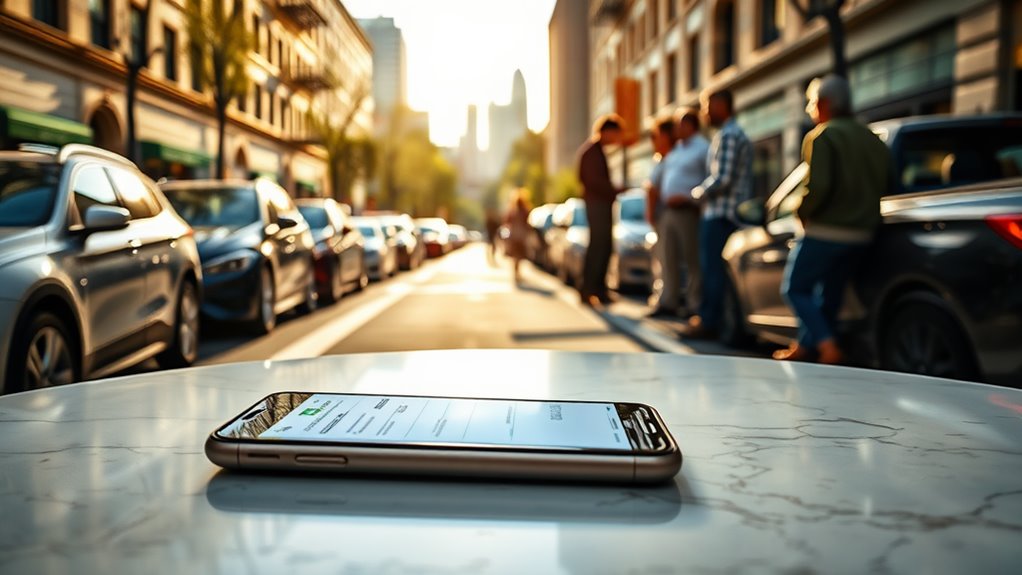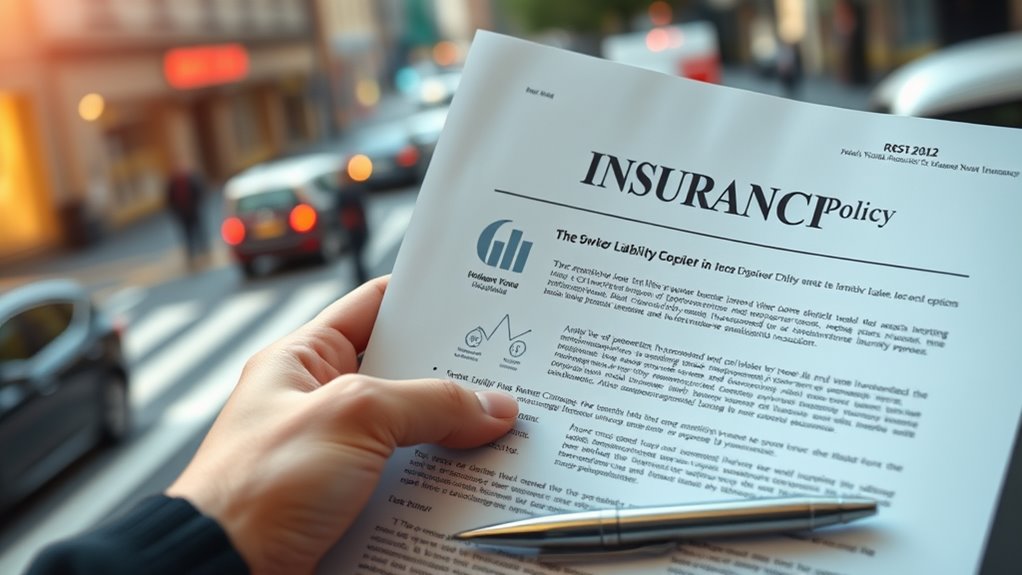Filing a car insurance claim can be a straightforward process, yet it often feels overwhelming. Knowing the right steps can make all the difference in how quickly and efficiently your claim is resolved. By understanding your policy and gathering essential information immediately after an accident, you set the foundation for a successful claim. Let's explore the best practices that guarantee you navigate this process with confidence and clarity.
Key Takeaways
- Collect all necessary information about the accident, including dates, involved parties, and vehicle details.
- Document the accident scene thoroughly with photographs and witness statements.
- Notify your insurance company promptly and submit all required documentation for your claim.
- Maintain clear communication with your claims adjuster to stay updated on the investigation progress.
- Review the repair estimate and ensure all repairs are completed satisfactorily before finalizing the claim.
Understand Your Non-Owner Car Insurance Policy

When you don't own a car but still drive regularly, understanding your non-owner car insurance policy is vital. This type of insurance provides liability coverage, including bodily injury and property damage, for drivers using vehicles they don't own. It's particularly useful if you frequently rent cars or borrow friends' vehicles. Remember, it acts as secondary coverage, kicking in after the car owner's policy limits are reached. However, it won't cover damages to the vehicle itself, extensive, or collision costs. Additionally, non-owner car insurance can help maintain continuous insurance coverage history, which is important for future policy applications. Having liability coverage ensures you are protected against legal and financial consequences in case of an accident. Additionally, state laws can vary, so make certain you're compliant with local regulations. Knowing these details helps you maintain financial responsibility and guarantees you're adequately covered in case of an accident.
Gather Essential Information Immediately After the Accident
Gathering essential information immediately after an accident is crucial for ensuring a smooth claims process. Start by noting the date, time, and exact location of the incident. Record when the police arrived and any reports filed.
Collect the names and contact details of all drivers involved, along with their insurance information. Don't forget vehicle specifics like model, color, and license plate numbers. Document any passengers and witnesses present.
Pay attention to the accident conditions, including weather and road conditions. Provide a detailed description of the event, including the type of impact and any complicating factors.
Finally, gather financial documentation, including policy numbers, proof of ownership, and any repair estimates. This information will support your claim effectively.
Document the Accident Scene Effectively
Effective documentation of the accident scene is vital for supporting your insurance claim. Start by photographing all vehicles involved, guaranteeing you capture damage from multiple angles and include visible license plates. Detail the damage severity and verify the make, model, and year of each vehicle. Document any missing parts as well.
Next, capture environmental details such as road conditions, weather, skid marks, and relevant traffic signs.
Collect witness information by obtaining names, contact details, and written statements. Confirm you have a police report, including the incident report number and officer's contact information.
Finally, secure all documentation and create a timeline of events. Use digital tools to organize evidence and update records regularly.
Contact the Insurance Company Promptly
After documenting the accident scene, it's important to contact your insurance company promptly. The sooner you reach out, the quicker your claim process can begin. Keep your policy number and accident details handy for a smooth interaction.
- Use Multiple Contact Methods: Submit your claim via phone, email, or mobile app based on your preference.
- Prioritize Safety: Guarantee everyone's safety before making contact.
- Prepare Documentation: Have necessary documents like police reports and vehicle details ready.
Timely reporting prevents claim denials and protects your rights. It helps identify hidden damages early and streamlines the claims process.
Be factual in your communication and follow your insurer's guidelines to avoid complications.
Report the Accident Details Accurately
When reporting an accident, accuracy is essential, as the details you provide can markedly impact your claim's outcome.
Begin by ensuring the police report includes correct information; this document holds significant weight. Collect witness statements to back your account and gather photographs or videos of the scene, focusing on vehicle damage and any injuries.
Document the accident's exact location, weather, and road conditions. If discrepancies arise in the police report, promptly contact the reporting officer to resolve them.
Record all involved drivers' contact and insurance details, and create a clear narrative of the events. The more precise and thorough your report, the stronger your claim will be.
Provide Necessary Documentation for Your Claim
Providing necessary documentation for your claim is essential to secure a smooth and successful process. To strengthen your case, gather the following information:
- Vehicle Details: Make, model, and license plate numbers of all vehicles involved.
- Accident Documentation: Date, time, location, and a concise summary of what happened.
- Witness Information: Names, contact details, and statements from any witnesses.
Additionally, document the scene with photographs, collect relevant police reports, and maintain copies of all communications with your insurer.
Keeping thorough records will help facilitate your claim and guarantee that all necessary evidence is available to support your case.
Communicate With Your Claims Adjuster
Once you've gathered all necessary documentation for your claim, effective communication with your claims adjuster becomes the next step.
Remember, adjusters work for the insurance company and aim to minimize payouts. Stay polite and cooperative, focusing solely on factual information without speculation. Use clear and concise language to present your case, and avoid providing unnecessary details that could jeopardize your claim.
When answering questions, stick to simple yes or no responses. Be prepared for recorded statements; consult legal counsel before agreeing to them.
Maintaining professionalism is key; don't admit fault or apologize. Keep detailed records of all interactions to guarantee a smooth claims process. This approach will help you navigate negotiations effectively.
Follow Up on the Claims Investigation Process
As you navigate the claims investigation process, staying informed about its various stages is crucial. Regular follow-ups can help you understand the timeline and any additional information needed.
Here are key aspects to take into account:
- Document Collection: Verify you've provided all required documents, including police reports, medical records, and witness statements.
- Timelines: Be aware that the investigation typically takes 35 days, but delays can occur if information is missing or disputes arise.
- Communication: Maintain open lines with your adjuster to address any questions or discrepancies promptly.
Review Claim Approval or Denial
After you've navigated the claims investigation process, it's time to review the outcome of your claim, whether it's approved, denied, or partially approved.
After completing the claims investigation, it's essential to assess whether your claim was approved, denied, or partially approved.
For an approved claim, check the coverage details and any deductibles that apply, as payments will typically reflect those deductions.
If your claim is denied, carefully read the written explanation provided by the insurance company. Common reasons for denial include lack of coverage, missing documentation, or not adhering to state laws.
If you believe the denial is unjust, you can initiate an appeal by submitting additional evidence.
In cases of partial approval, understand which aspects are covered and which are not, as this will guide your next steps in resolving the claim.
Schedule Repairs and Finalize Claim Resolution
Scheduling repairs and finalizing your claim resolution involves several important steps to guarantee a smooth process.
Start by evaluating the damage and selecting a reputable repair shop that meets your insurance requirements. Next, obtain a detailed estimate and make sure it's submitted for approval.
- Communicate with your insurance adjuster to clarify payment arrangements and confirm coverage.
- Schedule a repair time that aligns with the shop's availability and your needs.
- Inspect the repaired vehicle to confirm all work is completed satisfactorily.
Once repairs are complete, review the final costs against the estimate, finalize payment details with your insurance, and document all communications.
This thorough approach helps make certain you've met all obligations and can close your claim successfully.
Conclusion
Filing a car insurance claim is like steering through a winding road; it requires careful attention and steady focus. By following these ten essential steps, you can guide your way through the process with confidence. Remember, each detail you gather and every conversation you have acts as a milestone on your journey to claim resolution. Stay informed, be proactive, and soon you'll reach your destination, ensuring your vehicle is back on the road and your peace of mind restored.


















